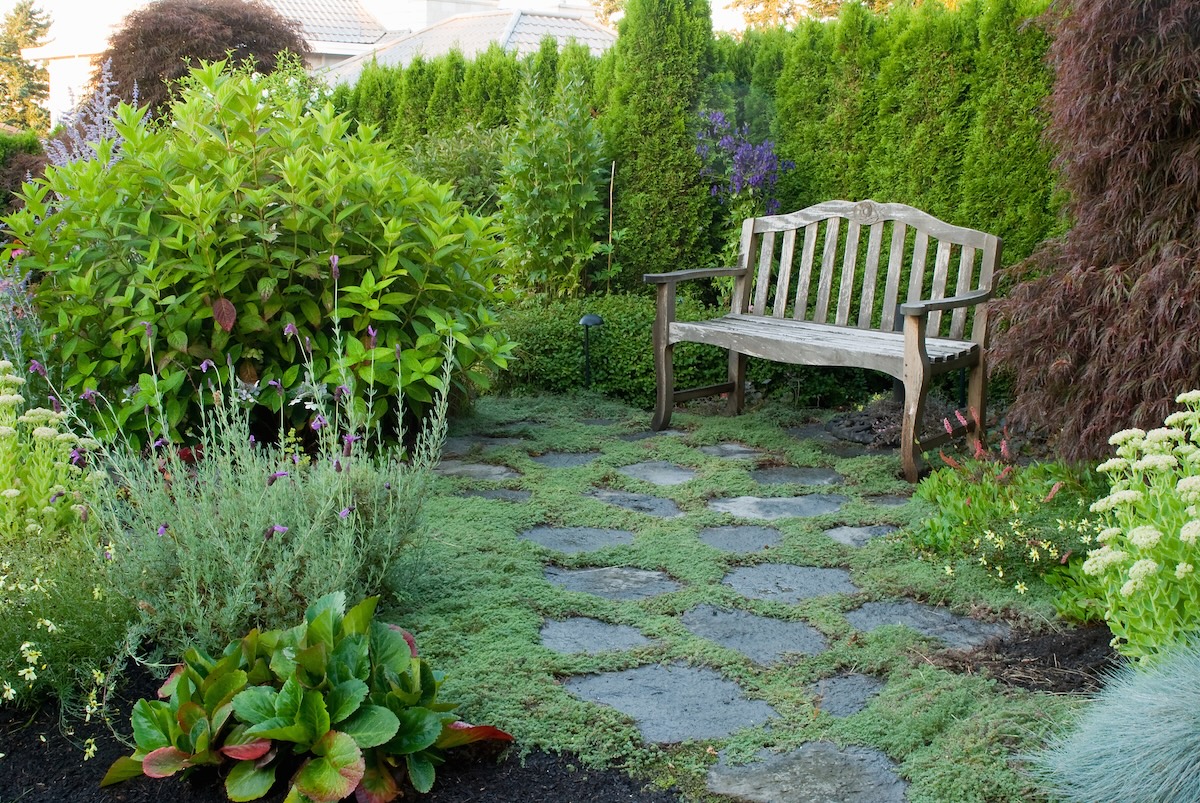We may earn revenue from the products available on this page and participate in affiliate programs. Learn More ›
When searching for showstopping landscaping plants, many homeowners gravitate toward plants that bloom. But foliage doesn’t have to be merely backdrop scenery; it can take center stage. Through color, shape, or texture, some plants produce dramatic foliage that can sometimes rival flowers.
Foliage typically outlasts flowers, providing allure even when flowering plants aren’t in bloom. Foliage may also be a solution for shadier areas where flowering plants struggle, or it might complement modern architectural styles better than the bosomy blooms found in cottage gardens. Striking as their foliage may be, some plants also produce flowers, providing a one-two punch of beauty.
1. Red Twig Dogwood (Cornus sericea)
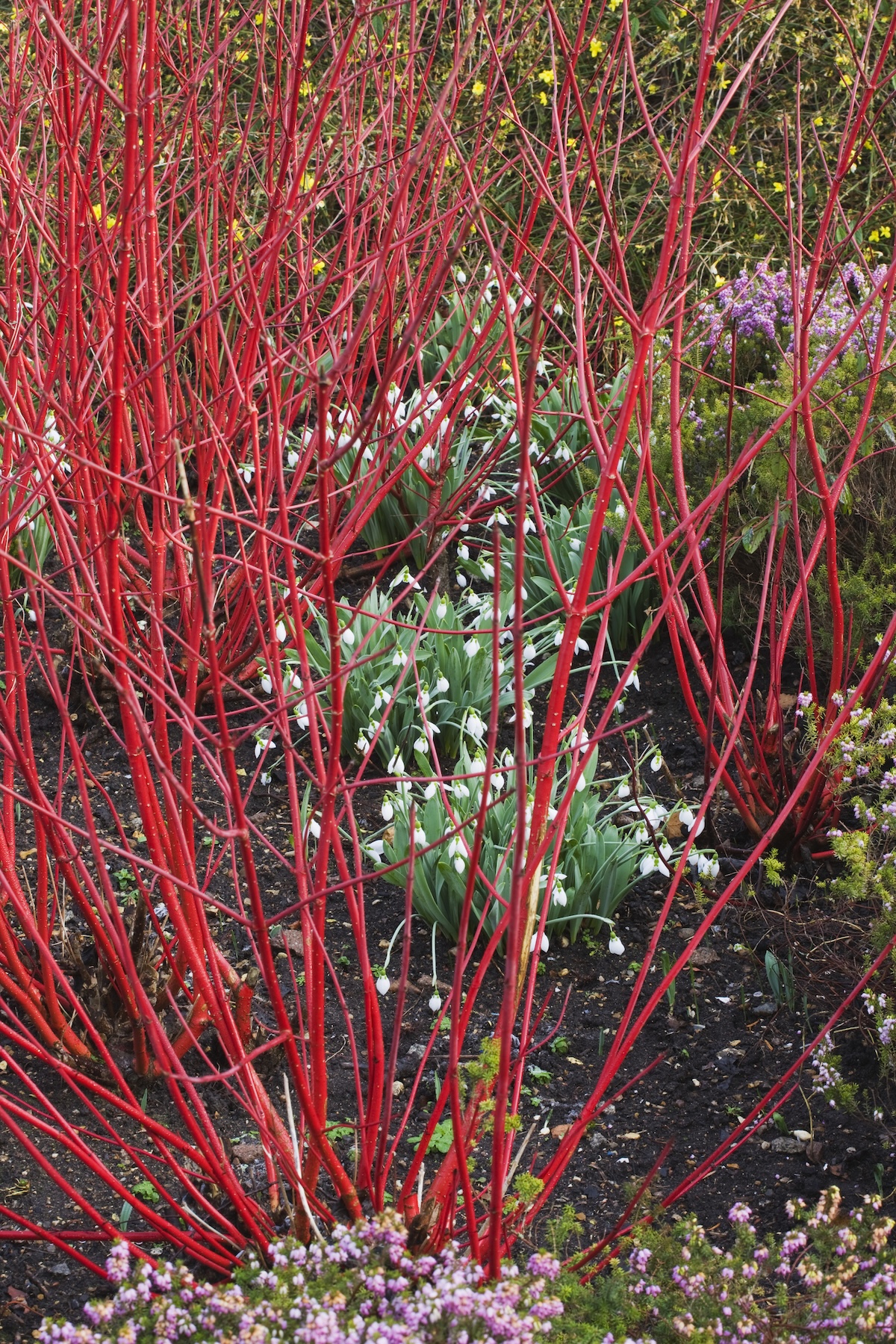
Prized for its pop of color against an often-snowy winter background, the red twig dogwood is a four-season plant, producing fragrant white flowers in spring and, in summer, offering variegated foliage, which turns rose-red in autumn and is adorned with red berries, before falling to reveal its brilliant red branches.
A fast-grower, this shrub can get quite large—up to 9 feet tall and 12 feet wide—but can (and should) be pruned and even periodically trimmed to the ground to control growth. Red twig dogwood is easy to grow, even in boggy conditions, and is as popular with pollinators, and resistant to deer.
Best For: Moist areas that receive full to partial sun; can be a specimen or part of a thicket
Hardiness Zones: 2-7
2. Canna Lily (Canna)

Canna lilies add a tropical look to the garden. Reaching heights of up to 10 feet tall, they can also serve as a seasonal privacy screen, with their large, green-and-bronze striped or variegated banana-like leaves along tall stalks inducing tropical vibes. While they produce stems of showy lily-shaped flowers in red, orange, yellow, or salmon, the foliage itself is a powerful draw.
In northern zones, otherwise easy-to-grow canna rhizomes must be dug in late fall and stored. They can be re-planted in late spring. When planted in full sun, they reward the gardener with blooms all summer.
Best For: Garden beds, borders, containers, and sunny areas where tall plants are desired
Hardiness Zones: 6-10
3. Caladium (Caladium x hortulanum)
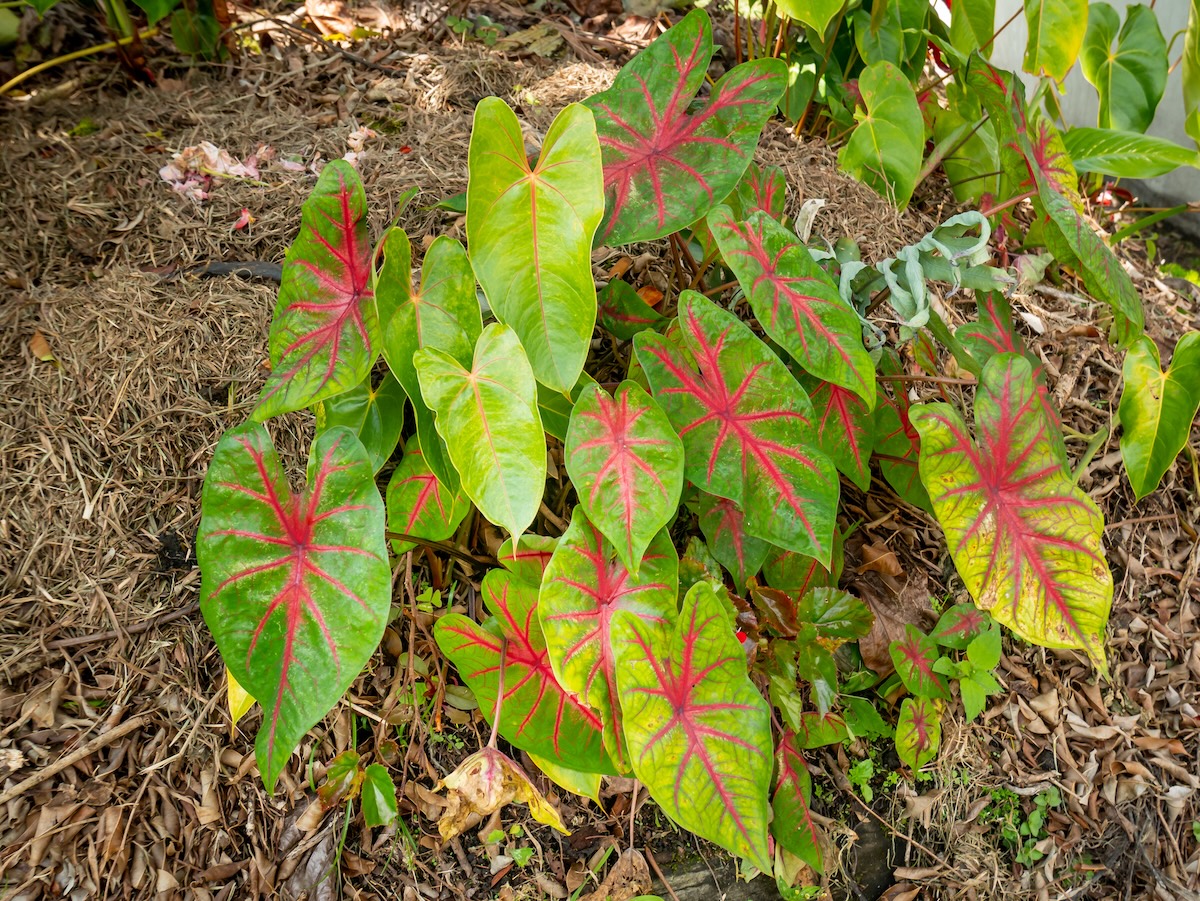
Considered an annual in northern gardens, caladiums offer a tropical touch of color with their large, translucent heart- or arrowhead-shaped leaves in green, red, pink, and white, with mottling or stripes created by dramatically conspicuous veining. These lovely landscaping can be brought indoors to overwinter or tubers can be dug and stored for planting the following spring.
Capable of producing tiny flower spikes, their foliage, which lasts throughout the growing season, is the main attraction. Best suited for partial shade, caladiums are ideal for borders and containers. But they come with a caution: they’re toxic to cats, dogs, and horses.
Best For: Partial shade, borders, containers, indoors or out
Hardiness Zones: 9-11
4. Rex Begonia (Begonia rex-cultorum)
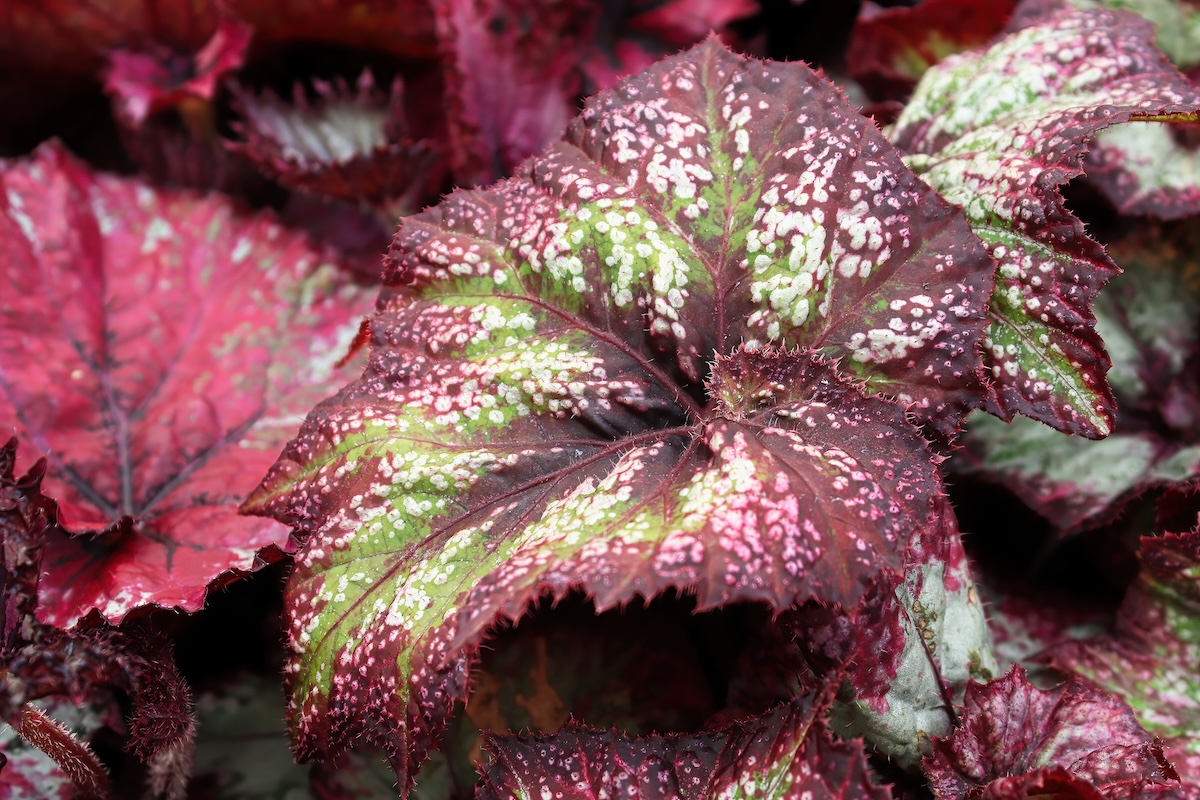
With large swirled, spotted, spiraled, ruffled, or winged leaves in shades of green, red, silver, and purple, who needs flowers? Except that Rex begonias, sometimes known as painted-leaf begonias or fancy-leaf begonias, do produce dainty little flowers that add to this fibrous plant’s charms.
What doesn’t add to its charm is its fussiness. They need bright indirect light: too little light forces dormancy, while too much burns. They like regular water, but too much causes leaf drop, withering and ultimately, death.
These small plants grown from rhizomes can be rewarding, but are toxic to people and pets.
Best For: Shady flower beds or potted plants, inside and out
Hardiness Zones: 10-12
5. Hosta (Hosta lancifolia)
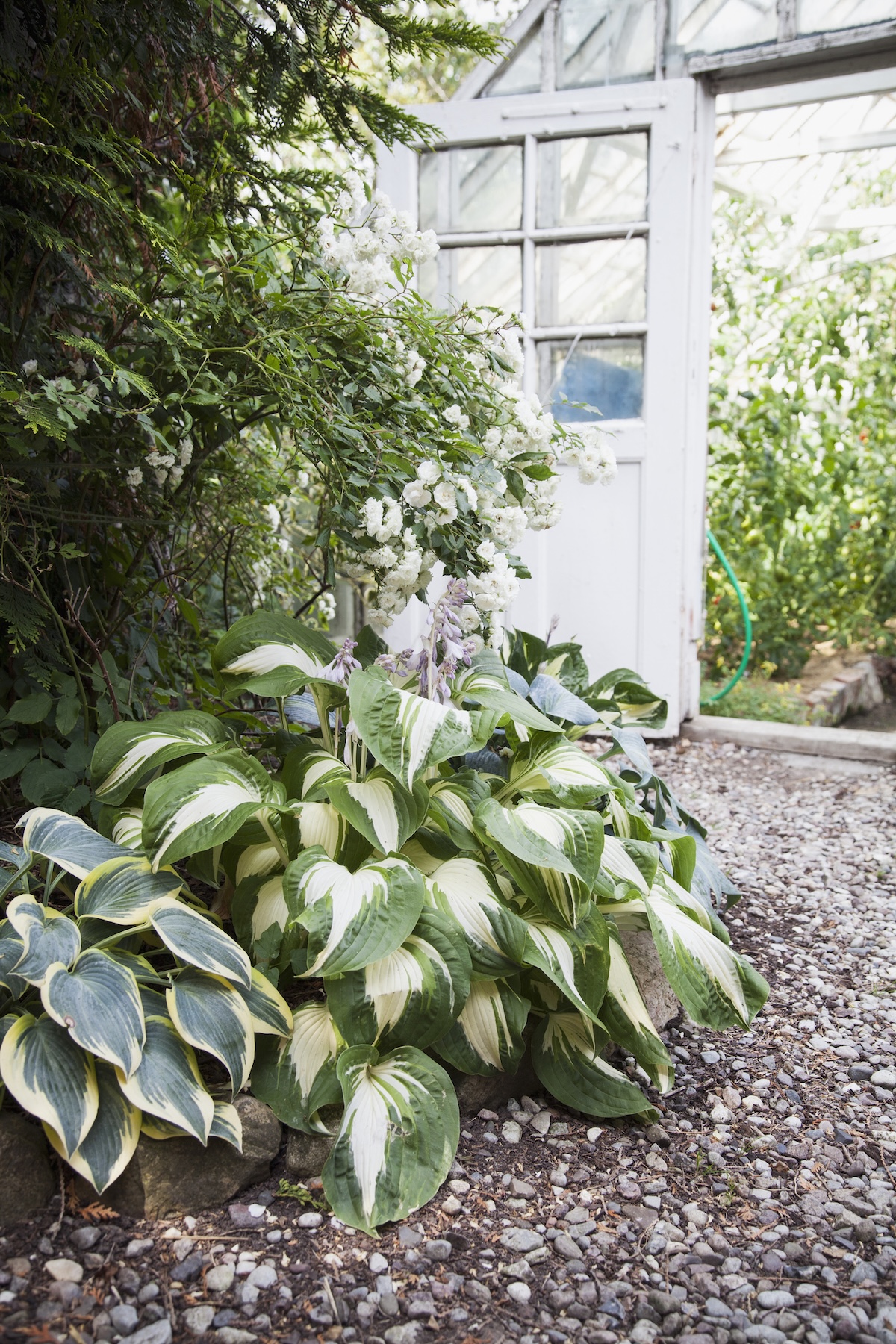
Known for brightening shady corners around the yard, the herbaceous hosta is an easy-care perennial grown from rhizomes. It produces large leaves in a range of shapes, textures, and colors, including shades of green, gold, blue, and variegated patterns.
Capable of growing in full shade, hostas perform better when they receive at least some sun. Given adequate light, many varieties send up tall stalks of tiny purplish-white flowers, but it’s the foliage that is the true attraction. While deer love them and can devour mass plantings, hostas are toxic to pets.
Best For: Shady beds with rich, well-drained soil
Hardiness Zones: 3-9
6. Ornamental Kale (Brassica oleracea)
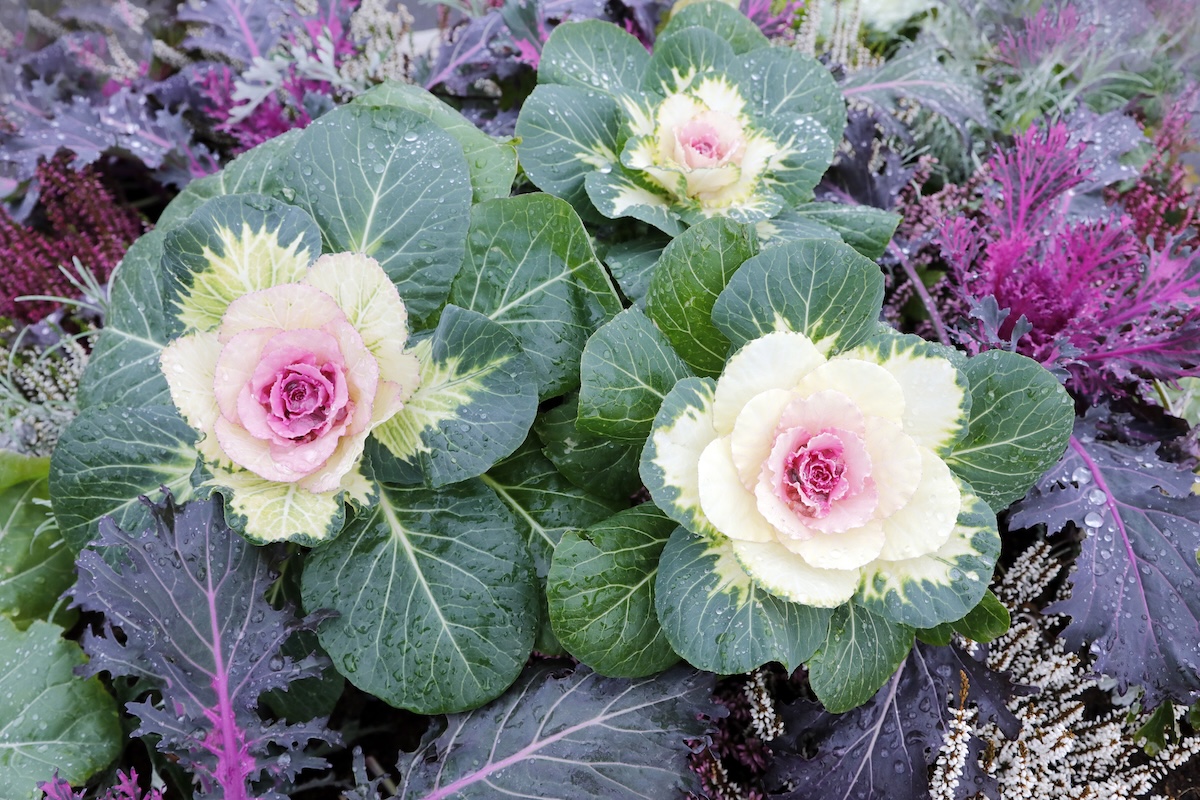
While other plants begin dying off in autumn, ornamental kale withstands temperatures as low as 5 degrees. Bred for looks over flavor, ornamental kale is nevertheless edible and may appeal to local wildlife, but its vibrant purples, roses, and whites on broad serrated, curly, or fringed leaves that form flower-like rosettes make ornamental kale a popular fall favorite.
Easily grown in sunny locations during the cooler spring and fall seasons, ornamental kale prefers the moist, well-drained soil conditions consistent with those times of year. Spreading up to one foot wide, it grows only about 15 inches tall, making it an ideal low border plant.
Best For: Ground cover, edging in cool weather
Hardiness Zones: 2-11
7. Dusty Miller (Jacobaea maritima)
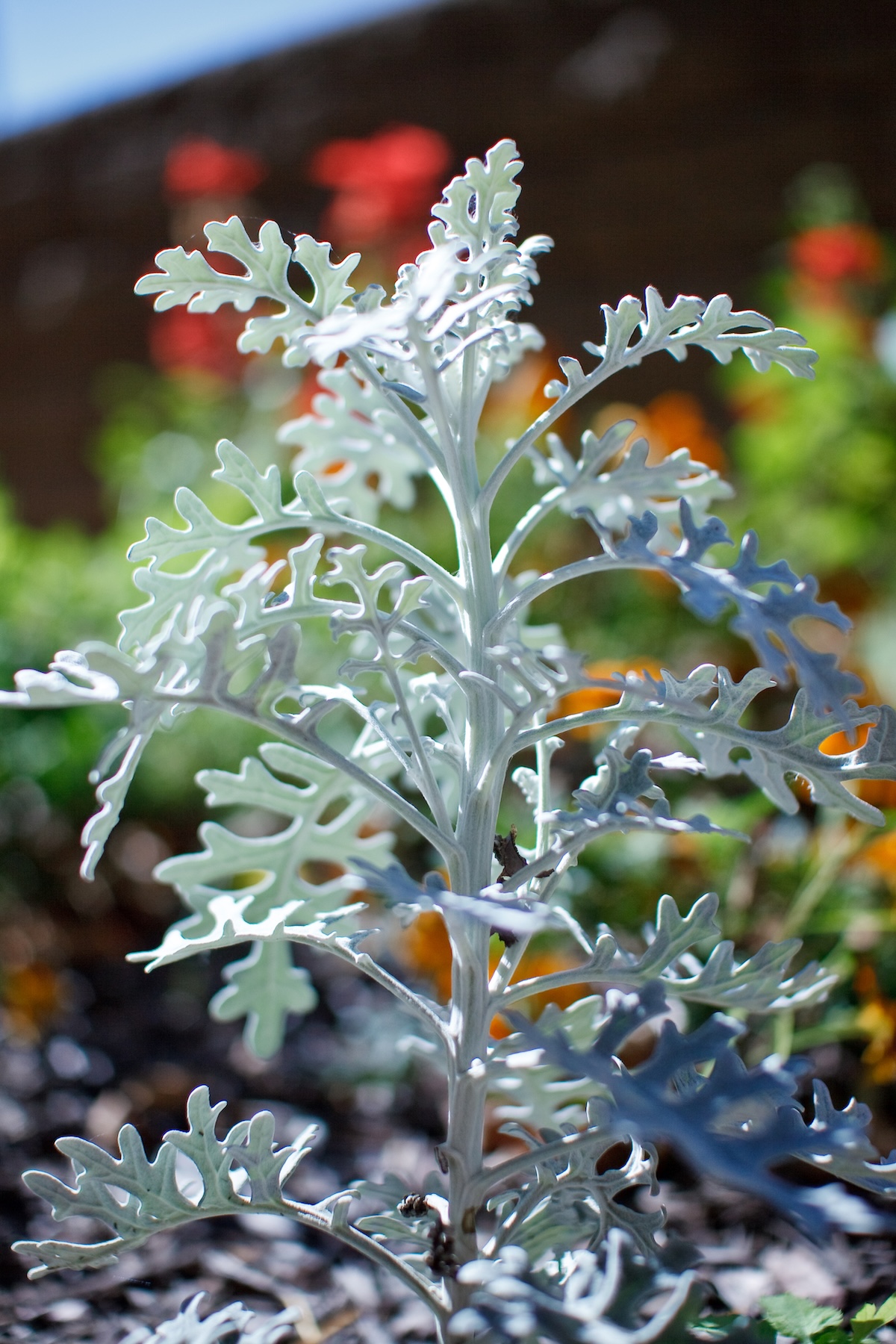
Prized for its soft, silvery, deeply lobed leaves that adopt an almost fern-like quality, dusty miller is a common garden companion to brightly flowered annuals. An evergreen perennial in southern climes, it’s used as an annual in northern regions, where its fuzzy, feathery leaves add texture to the landscape.
Drought-tolerant, dusty miller prefers full sun, but tolerates partial shade. Capable of producing small yellow flowers, this low-maintenance plant is most often used for its neutral, complementary foliage. A well-behaved plant that doesn’t spread more than 2 feet, it is poisonous if ingested.
Best For: Borders, edging, containers
Hardiness Zones: 8-11
8. Lamb’s Ear (Stachys byzantina)
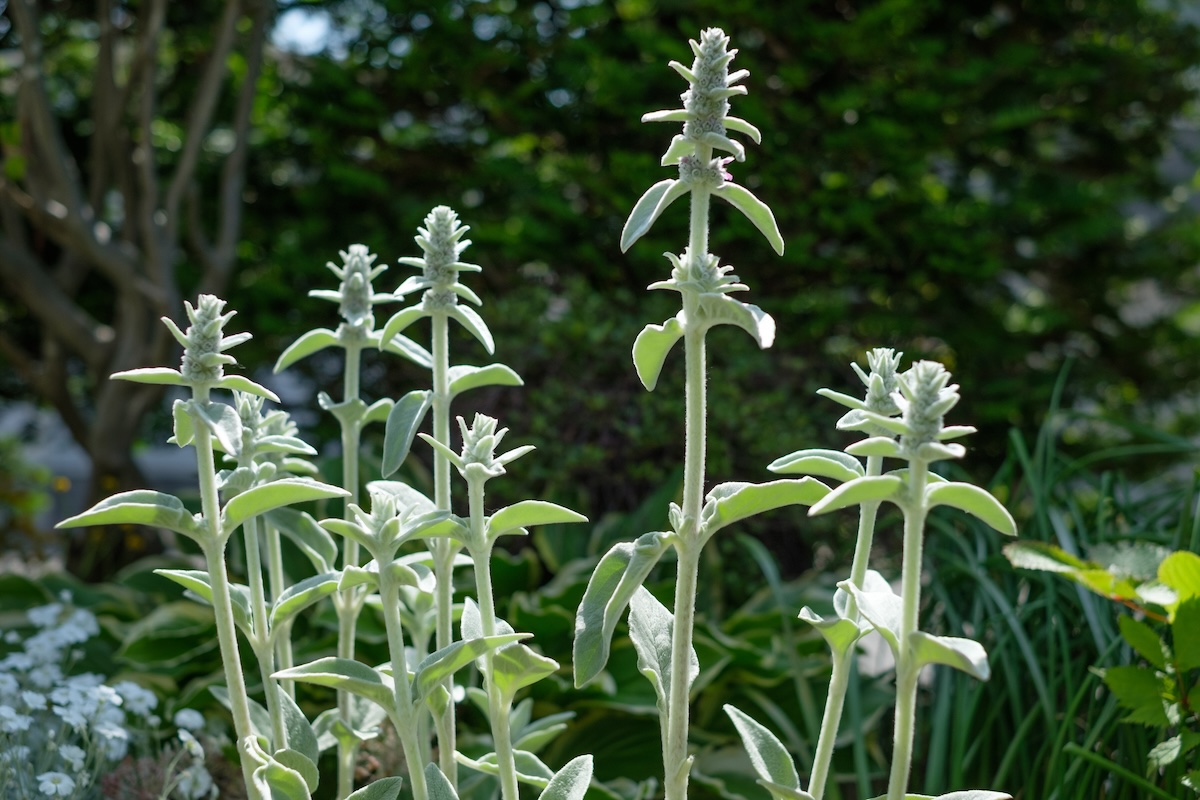
Another silver siren of the garden, lamb’s ear is an herbaceous perennial known for its plump, fuzzy silver leaves. A fast-spreading, drought-tolerant, deer-resistant, low-growing (12 to 18 inches) groundcover, it adds pleasing texture to garden beds and pathways and acts as a contrasting neutral to bright blooms of companion plants.
Best grown in full sun, this fuzzy-wuzzy tolerates partial sun as well as poor soil, but it doesn’t like too much dampness. Although new cultivars don’t bloom, older varieties may produce small flower spikes of pink, purple, or white in spring and summer.
Best For: Groundcover, garden beds, edging
Hardiness Zones: 4-9
9. Coral Bells (Heuchera sanguinea)
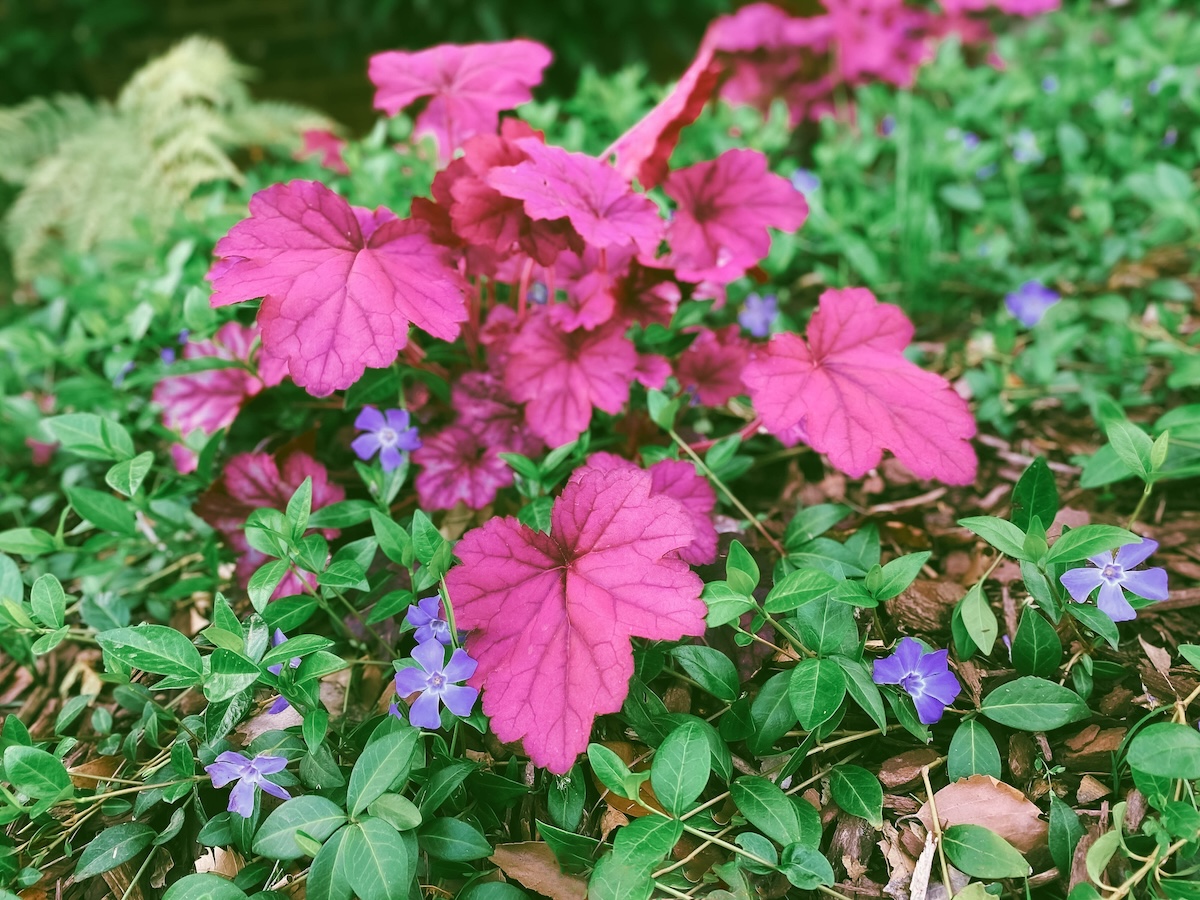
A short-lived perennial foliage plant native to North America, coral bells are available in numerous varieties and hybrids. In general, the plant develops into round mounds with a crown at its base. Lobed leaves may be green, bronze-green, lime green, gold, deep purple, or wine-red, particularly on the underside, which produces a vivacious effect in a breeze.
Given partial sun to full shade and consistently moist soil, these small (6 to 18 inch tall) plants produce masses of small, delicate, almost airy red or pink bell-shaped flowers on tall stems in spring or early summer.
Best For: woodlands, rock gardens, borders, containers, groundcover
Hardiness Zones: 4-9
10. Pink Muhly Grass (Muhlenbergia capillaris)
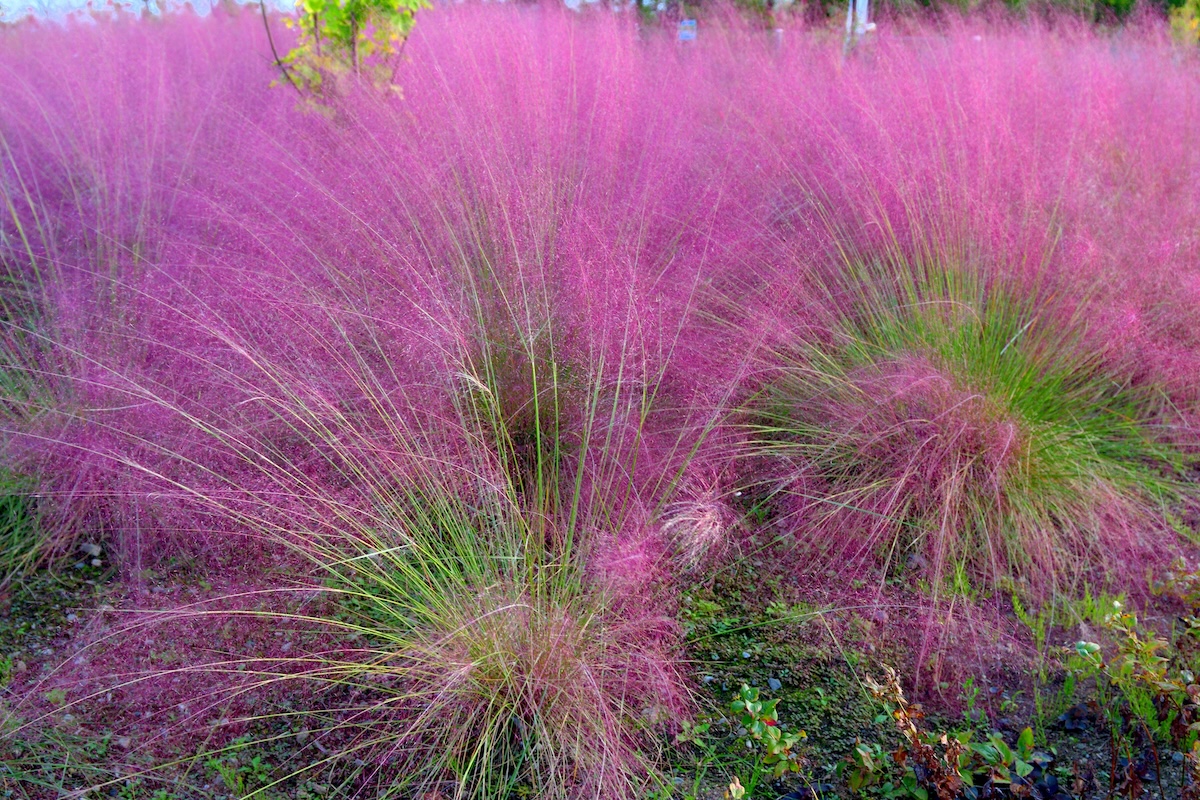
Pink muhly grass, also called pink hair grass, makes a statement with its masses of pink flower panicles gently blowing in the wind atop 3-foot-tall dark green clumping foliage. “Ornamental grasses provide a soothing sound throughout your landscape, especially on a breezy day,” observes Matt Morelli, region technical manager for TruGreen. “Not only do they sway in the wind, these grasses can also provide privacy, depth, and character to the landscape with very little maintenance requirements.”
The pink plumes provide late season color, but the bushy grass adds interest all year. Grown best in full sun, this deer-resistant, native ornamental grass thrives in even the poorest soils.
Best For: Sunny spaces with good drainage
Hardiness Zones: 5-11
11. Jacob’s Ladder (Polemonium)

Jacob’s ladder’s fern-like, purple-flushed leaves make it a garden focal point, whether it’s in bloom or not. It’s a shade-loving perennial that produces clusters of fragrant, dainty, deep blue bell-shaped flowers in the spring.
A low-maintenance plant, Jacob’s ladder likes moist but not soggy soil. At only about a foot tall and twice as wide, it has the appearance of a woodland shrub that is, fortunately, wildlife-resistant. Sometimes called Creeping Jacob’s ladder, it self-seeds, but is not an aggressive spreader.
Best For: Shady or partially shady woodsy areas with moist soil
Hardiness Zones: 4-8

